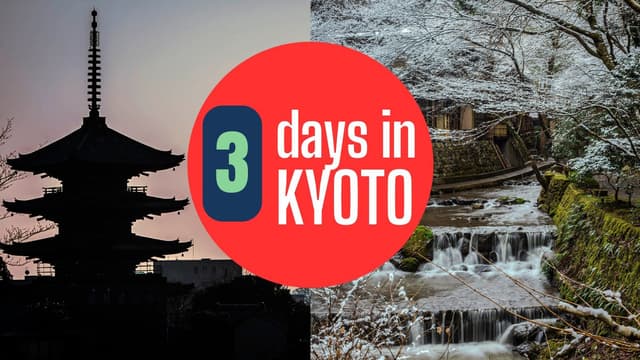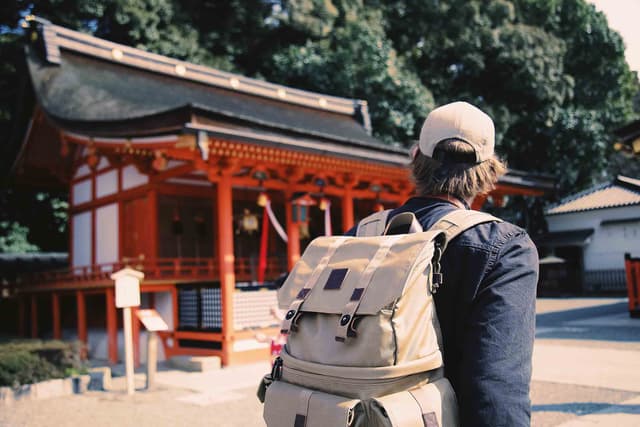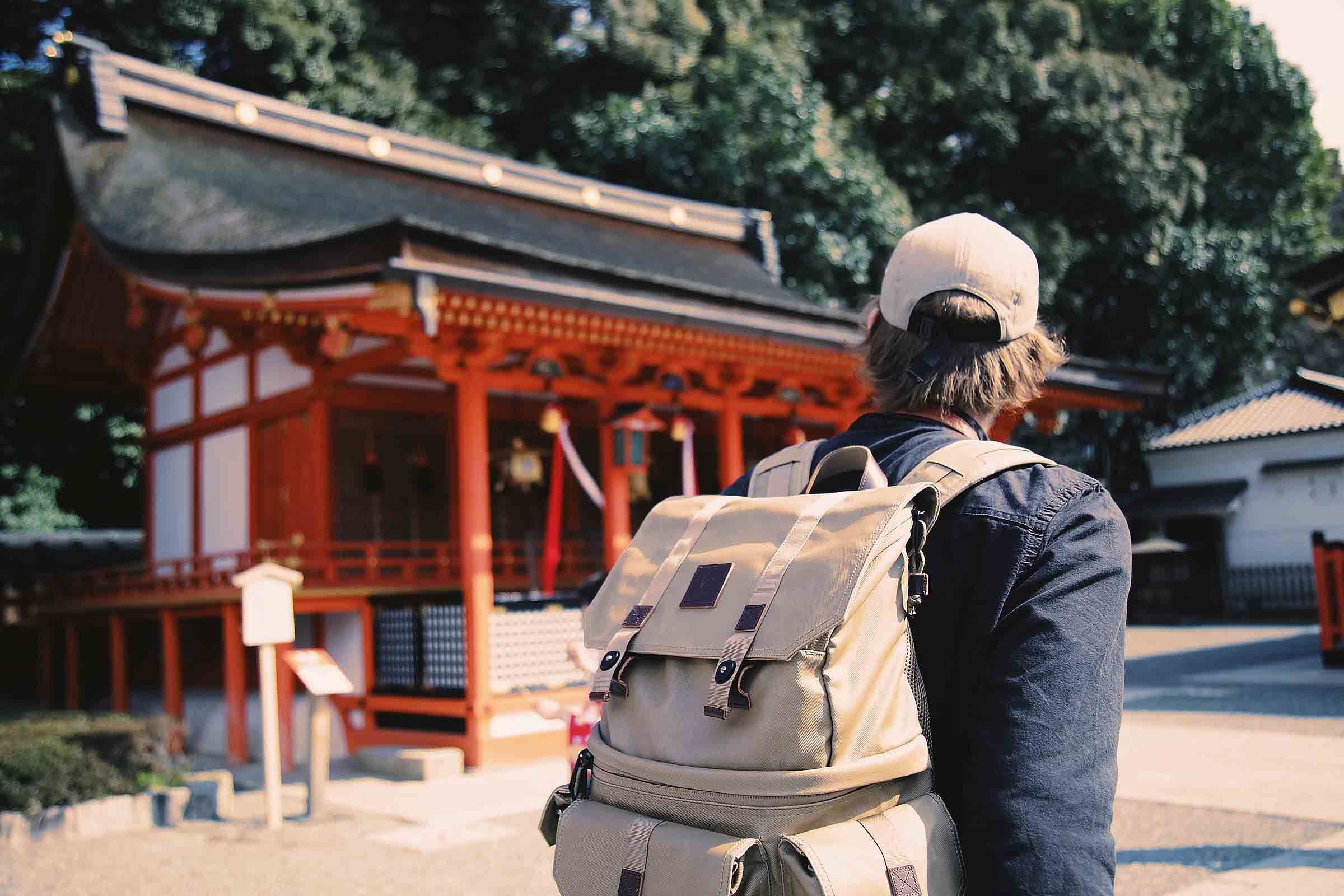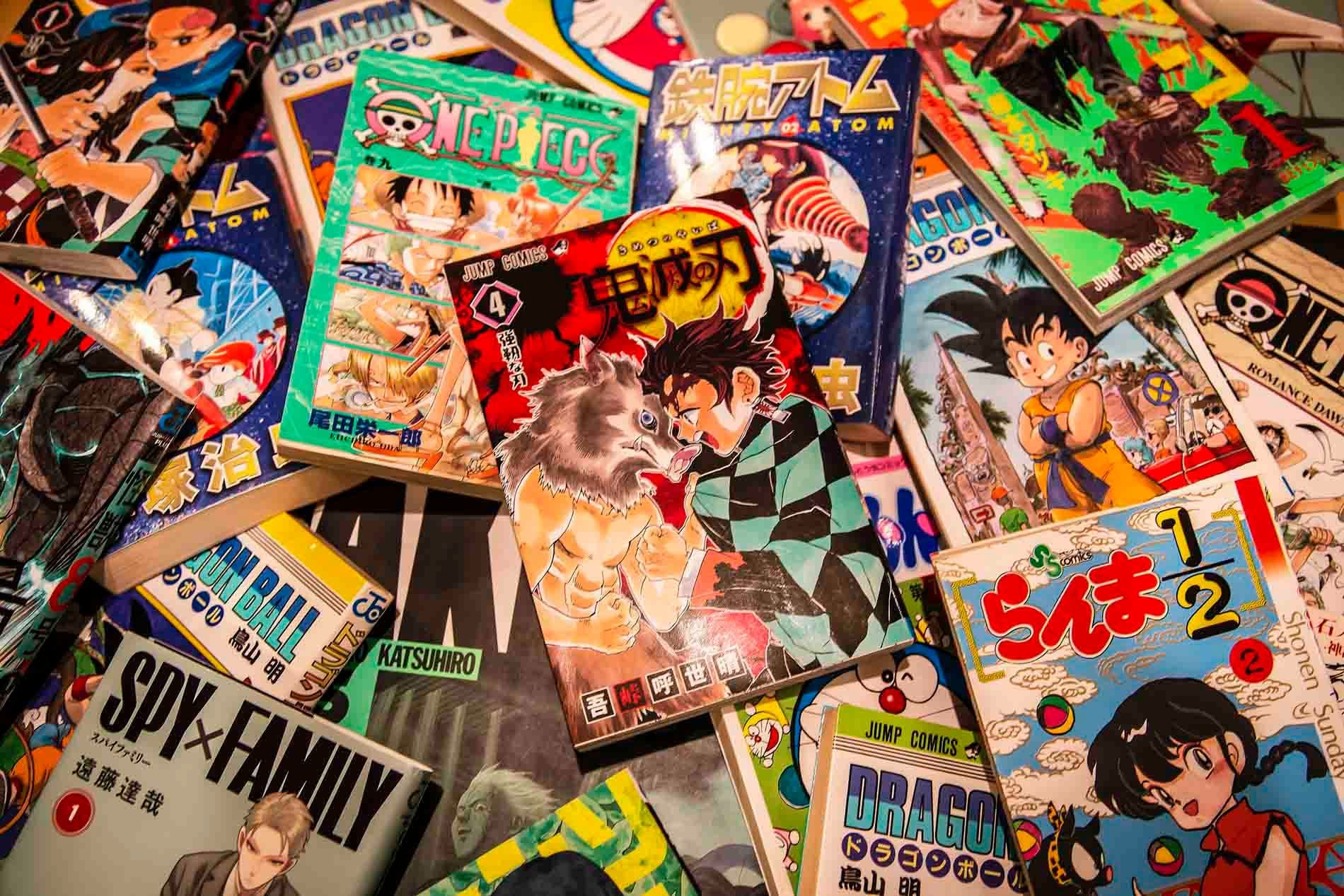

Table of contents:
I first discovered manga (Japanese comics) while living in Japan as a teenager. At the time, I was still learning Japanese and had plenty of free time, so I picked up a Dragon Ball volume out of curiosity. I didn’t yet have the language skills to read it fluently, but with the help of a dictionary, I slowly made my way through the story.
That first manga opened up a whole new world for me. Beyond just getting me past basic Japanese phrases, it gave me a window into Japanese culture, humor, and storytelling in a way that textbooks never could.
If you’re curious about manga but don’t know where to start, this guide will walk you through what manga is, how to read it, and where to find the best series for beginners. Whether you’re a casual reader or someone looking to dive deeper into Japanese comics, this guide will help you explore manga with confidence!
Further Reading: If you would like to know more about manga comics, please check out our article on the history of Japanese manga.
👉 Click here to start learning Japanese today! Mondly | Rocket Languages

1. Manga vs Anime: Are Manga and Anime The Same?
No, manga is not just anime comics. While they are both important parts of Japanese pop culture, they are different forms of media. Here's how they differ:
- Manga: Printed comics, often later adapted into anime.
- Anime: Animated TV shows or films, sometimes based on manga.
Key differences:
- Not all manga becomes anime, and not all anime is based on manga.
- Storytelling: Manga allows for more detailed stories and pacing.
- Art style: Manga has its own unique style that may differ from its anime adaptation.
Audience engagement: Reading manga gives a different experience compared to watching anime.
Popular Articles


Tokyo Favorites: 20 Must-Do Experiences for Travelers

Kyoto Bike Tours: Discover the City’s Hidden Gems with Noru

Kyoto 3-Day Itinerary: Best Things to Do for First-Time Visitors

Universal Studios Japan Tickets: Your Guide to Visiting USJ

Find Out What Japan Really Thinks of Foreign Tourists

Manga Explained: Top Recommendations for Beginners
2. Manga’s Influence on Japanese Pop Culture
Manga is a massive part of Japanese pop culture and has shaped everything from fashion to movies. Many of Japan’s most famous anime, such as One Piece, Dragon Ball, and Naruto, started as manga before becoming global hits.
2.1. Popular Manga Genres for Beginners
There are many different types of manga, each with its own themes and storytelling style. Here are a few popular genres:
- Shōnen (Action & Adventure): One Piece, Demon Slayer, Dragon Ball
- Shōjo (Romance & Drama): Fruits Basket, Ouran High School Host Club
- Seinen (Mature Themes): Attack on Titan, Berserk, Vinland Saga
- Fantasy: Fullmetal Alchemist, The Rising of the Shield Hero
- Sports: Haikyuu!!, Slam Dunk, Blue Lock
Local Insight:
If you're not sure where to start, check out free manga previews on platforms like VIZ Media or Manga Plus.2.2. Where to Find Manga Online
If you’re new to manga, here’s where you can legally read or buy digital and print copies:
- Free Manga (Legal Sites): Manga Plus, Crunchyroll Manga
- Subscription Services: Shonen Jump App, Kindle Unlimited
- Physical Copies: Bookstores like Kinokuniya, Book Off, Amazon
Local Insight:
Want to try reading manga in Japanese? Even if you’re a beginner, using apps like Mondly or Rocket Languages can help you recognize common words and phrases, making your manga journey even more immersive!3. Beginner-Friendly Manga: Best Recommended Reads
If you are looking for titles to help you get into manga comics, these are the ones I recommend! A couple of these titles sometimes cover some mature themes (e.g., Ranma 1/2 and Chainsaw Man). So, if you are a parent choosing a title for your kid, please be aware!

3.1. Dragon Ball (ドラゴンボール - doragon booru)
- Genre: Shonen (for boys)
- Creator: Akira Toriyama
- Plot: Dragon Ball follows Goku’s adventures filled with martial arts, humor, and friendship. The tone of this manga changed a lot of time.
- Why Read It? Dragon Ball is the foundation of modern shonen manga and a must-read for anyone interested in getting into manga! If you love epic battles, unforgettable characters, and a mix of humor and action. It’s also a great gateway into anime because of the long running cartoon series!

3.2. Ranma 1/2 (らんま1/2 - ranma nibun no ichi)
- Genre: Josei (for women)
- Creator: Rumiko Takahashi
- Plot: Ranma Saotome, a martial artist, transforms between male and female when splashed with cold water, leading to comedic and romantic twists.
- Why Read It? One of the funniest and most unique manga out there! Ranma 1/2 mixes action, romance, and gender-bending comedy. It’s a great intro to Rumiko Takahashi’s work, a legendary manga creator. WARNING: It does contain light sexual humor!

3.3. One Piece (ワンピース - wanpiisu)
- Genre: Shonen (for boys)
- Creator: Eiichiro Oda
- Plot: One Piece follows Monkey D. Luffy, a young pirate with the ability to stretch his body like rubber, as he sets out with his crew to find the legendary treasure known as One Piece. Along the way, they encounter powerful enemies and uncover the mysteries of the world.
- Why Read It? One Piece is the best-selling manga of all time. If you love adventure, humor, and world-building, this is for you. The story is long but rewarding, with unforgettable characters and deep emotional moments.
3.4. Naruto (ナルト)
- Genre: Shonen (for boys)
- Creator: Masashi Kishimoto
- Plot: Naruto follows Naruto Uzumaki, a young ninja ostracized for having a dangerous spirit sealed inside him. Determined to prove himself, Naruto strives to become the strongest ninja (Hokage) in his village. Along the way, he forms deep friendships and confronts powerful enemies, all while uncovering the secrets of his past.
- Why Read It? Naruto is the ultimate underdog story, filled with thrilling fights, deep friendships, and an inspiring message of perseverance. It’s one of the most influential modern shonen manga.

3.5. Demon Slayer (鬼滅の刃 - kimetsu no yaiba)
- Genre: Shonen (for boys), with Seinen (for men) elements
- Creator: Koyoharu Gotouge
- Plot: Demon Slayer follows Tanjiro Kamado, a kind-hearted boy whose family is slaughtered by demons, leaving his sister Nezuko as the only survivor—but she is turned into a demon. Determined to save her, Tanjiro joins the Demon Slayer Corps to fight demons and find a cure for Nezuko. Along the way, he faces intense battles and forms bonds with fellow demon slayers.
- Why Read It? I strongly recommend Demon Slayer! It has stunning art, an emotional story, and some of the best fight sequences in manga. The themes of family and perseverance make it a great choice for new manga readers.

3.6. Spy x Family (スパイファミリー - supai famirii)
- Genre: Shonen (for boys), with elements of comedy and action
- Creator: Tatsuya Endo
- Plot: Spy x Family follows the story of a spy, Twilight, who must create a fake family for an important mission. He adopts a young girl, Anya, who can read minds, and marries Yor, an assassin. Unbeknownst to each other, they all have secret lives, leading to thrilling and humorous situations.
- Why Read It? My family love this title! A perfect blend of action, humor, and heartwarming moments. If you love quirky characters and a mix of spy-thriller with family comedy, this is a great starting point.
3.7. One-Punch Man (ワンパンマン - wanpanman)
- Genre: Shonen (for boys), superhero, action-comedy
- Creator: ONE
- Plot: One-Punch Man follows Saitama, a superhero who can defeat any enemy with a single punch. Despite his immense power, Saitama is bored and longs for a real challenge. The story humorously explores his attempts to find meaning in his strength while navigating a world full of bizarre monsters and heroes.
- Why Read It? One-Punch Man is a hilarious parody of superhero stories, with incredible action scenes and an entertaining twist on the classic hero formula. It’s easy to read and great for casual fans.

3.8. Chainsaw Man (チェンソーマン - chensooman)
- Genre: Seinen (for men), horror, dark fantasy
- Creator: Tatsuki Fujimoto
- Plot: Chainsaw Man follows Denji, a young man burdened by debt, who merges with his chainsaw devil companion, Pochita, to become a powerful demon hunter. Together, they face terrifying devils in a world filled with violence, dark humor, and shocking twists.
- Why Read It? While I cannot recommend this title for kids, I feel this title should be included in this list. Chainsaw Man is an insane mix of horror, action, and dark humor. If you like unpredictable stories, shocking twists, and intense battles, this is a must-read.
4. Classic Manga: Must-Read Titles for Every Fan

4.1. Doraemon (ドラえもん)
- Genre: Kodomo (children's manga)
- Creator: Fujiko F. Fujio
- Plot: A robotic cat from the 22nd century, Doraemon, travels back in time to help a young boy, Nobita Nobi. They go on adventures through time and space.
- Why Read It? A beloved classic in Japan, Doraemon is lighthearted, funny, and a great way to learn about Japanese culture and everyday life. If you are looking for a title to help practice beginner or elementary Japanese reading, give this title a try!

4.2. Astro Boy (鉄腕アトム - tetsuwan atomu)
- Genre: Shonen (for boys), science fiction
- Creator: Osamu Tezuka
- Plot: Astro Boy tells the story of a robot boy, created by a scientist to replace his lost son, who fights for justice in a futuristic world where humans and robots coexist. Astro Boy grapples with complex themes of humanity, technology, and morality.
- Why Read It? I love Astro Boy! It was the first major manga series, and it shaped the modern manga industry. If you love classic sci-fi and deep philosophical themes, this is an essential read.
4.3. Fist of the North Star (北斗の拳 - hokuto no ken)
- Genre: Shonen (for boys), post-apocalyptic, martial arts
- Creators: Buronson (writer) and Tetsuo Hara (artist)
- Plot: Fist of the North Star is set in a post-apocalyptic world where Kenshiro, a master of a deadly martial art, wanders through the wasteland protecting the weak. Using his lethal skills, Kenshiro battles ruthless enemies in a world ravaged by nuclear devastation.
- Why Read It? This is a classic! If you love intense action, dramatic storytelling, and iconic catchphrases, Fist of the North Star is a classic that inspired countless battle manga.
4.4. Slam Dunk (スラムダンク - suramu danku)
- Genre: Sports, shonen (for boys)
- Creator: Takehiko Inoue
- Plot: Slam Dunk follows Hanamichi Sakuragi, a delinquent high school student who joins the basketball team to impress a girl. Although initially uninterested in the sport, Hanamichi grows passionate about basketball and strives to lead his team to success.
- Why Read It? Slam Dunk is the greatest sports manga of all time—it’s funny, inspiring, and incredibly well-drawn. Even if you’re not a basketball fan, you’ll love it.
5. Ready to Take Your Manga Journey to the Next Level?
Ever thought about reading manga in its original Japanese? Even if you're just starting out, learning a few key words and phrases can make the experience more immersive!
🌸 Try language learning apps like Mondly or Rocket Languages to build your Japanese skills while enjoying your favorite manga.
🎌 Challenge yourself—start with simple manga like Doraemon or Dragon Ball and see how much you can understand!
FAQs
What is the most popular comic in Japan?
One of the most popular comics in Japan is One Piece, which has been a long-running favorite for decades. It has been turned into popular anime, animated movies, and even a live-action TV series on Netflix. Other highly popular titles include Naruto and Demon Slayer.
What is another word for Japanese comic?
Another word for Japanese comic is "manga" (漫画), which literally translates to "whimsical pictures" or "playful drawings." It’s used to refer to Japanese comics or graphic novels and is widely used around the world.
What are 18+ mangas called?
Mangas aimed at adults 18 and older are often referred to as "seinen" (成年) for men and "josei" (女性) for women. However, explicit or mature content manga might be labeled differently, such as "eromanga" (エロ漫画) for erotic themes.
What makes manga different from Western comics?
Manga is usually read from right to left and often focuses on deep storytelling and character development. Unlike Western comics, manga covers a wide range of genres for all age groups, from kids to adults.
How do I start reading manga as a beginner?
To start reading manga, I recommend picking up something targeted to kids, like Doraemon or Dragon Ball. That is where I started and it helped me to pick up new kanji and slang. Once you feel more confident, move on to One Piece! You can find manga in bookstores, libraries, or online.
Loading Comments...

James Saunders-Wyndham
I've been immersed in Japanese culture and daily life for over 30 years and am proud to call Japan my home. Originally from Australia, my journey has taken me from teaching at Japanese universities to traveling extensively across the country, uncovering its hidden gems. As a web developer, I built Romancing Japan from the ground up to share these experiences with you. Whether it's the charm of old Kyoto, the pulse of Tokyo, or the tranquility of the countryside, I love helping others discover the magic of Japan—one story at a time.
Popular Articles

Tokyo Favorites: 20 Must-Do Experiences for Travelers

Kyoto Bike Tours: Discover the City’s Hidden Gems with Noru

Kyoto 3-Day Itinerary: Best Things to Do for First-Time Visitors

Universal Studios Japan Tickets: Your Guide to Visiting USJ

Find Out What Japan Really Thinks of Foreign Tourists
